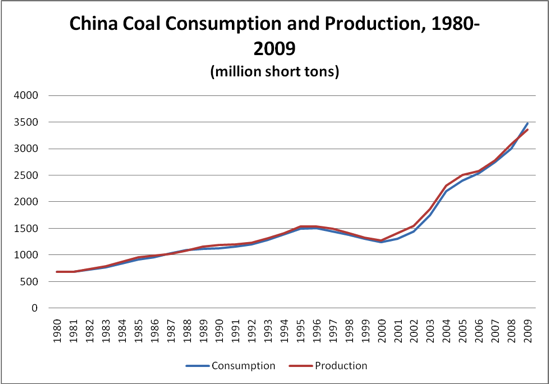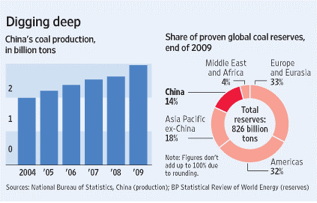Results 1 to 2 of 2
Thread Information
Users Browsing this Thread
There are currently 1 users browsing this thread. (0 members and 1 guests)
-
12-03-2010, 11:11 PM #1Senior Member


- Join Date
- May 2007
- Location
- South West Florida (Behind friendly lines but still in Occupied Territory)
- Posts
- 117,696
No US overseas aid for climate change: Senators
We request that the administration freeze further spending requests to implement international climate change finance programs
No US overseas aid for climate change: Senators
By EPW Blog
Thursday, December 2, 2010
Administration Must Stop Wasting U.S. Taxpayer Dollars on International Climate Change Bailouts http://tinyurl.com/27rbx7t
Link to Inhofe EPW Press Blog http://tinyurl.com/2ef8b7q
Link to Article http://tinyurl.com/22phbvr
WASHINGTON - The United States must freeze climate-change aid payments to developing countries to help them implement a global plan agreed in Denmarkâs capital last year, four US lawmakers said Thursday.
Republican Senators John Barrasso, James Inhofe, David Vitter, and George Voinovich told US Secretary of State Hillary Clinton that Washington cannot to spend the money at a time of swelling deficits and a bloated national debt.
âWe remain opposed to the US commitment to full implementation of the Copenhagen Accord, which will transfer billions of US taxpayer dollars to developing nations in the name of climate change,âJoin our efforts to Secure America's Borders and End Illegal Immigration by Joining ALIPAC's E-Mail Alerts network (CLICK HERE)
-
12-03-2010, 11:16 PM #2Senior Member


- Join Date
- May 2007
- Location
- South West Florida (Behind friendly lines but still in Occupied Territory)
- Posts
- 117,696
Despite Large Increases in China and India Coal
Global Carbon Dioxide Emissions Drop in 2009 Without Binding Commitments
By Institute for Energy Research
Thursday, December 2, 2010
According to the Global Carbon Project team[0], global carbon dioxide emissions dropped by 1.3 percent in 2009 from 2008 levels due to the weak world economy[ii], despite the growth in energy consumption by developing countries. Chinaâs carbon dioxide emissions grew 8 percent in 2009, while Indiaâs grew by 6 percent.[iii]
In the United States, the drop in carbon dioxide emissions in 2009 was much larger than the 1.3 percent drop in world emissions.[iv] Carbon dioxide emissions in the United States were 7 percent lower in 2009 due to slow economic growth, a drop in energy demand of almost 5 percent, a drop in electricity generation of 4 percent, the use of more efficient technologies, and the addition of cleaner sources of energy (natural gas and renewable energy).[v] (See chart below.) This reduction was the largest decline in carbon dioxide emissions in the United States since data collection began in 1949.[vi] In the U.S. electric generating sector, fuel switching from coal to natural gas and renewable energy resulted from higher coal prices, lower natural gas prices, and subsidies for renewable energy.
Source: Energy Information Administration, http://www.eia.doe.gov/oiaf/environment ... index.html
Shift in Countries Generating Carbon Dioxide Emissions
In 1990, the developed countries produced 65 percent of the worldâs carbon dioxide emissions. Currently, those countries are producing less than 43 percent of the worldâs carbon dioxide emissions. During that period, the developed countries have cut their emissions by 10 percent while the developing countries have more than doubled their carbon dioxide emissions.[vii] Developing nations were not affected by the recession as much as developed nations, and while making improvements in energy technology, developing nations are still not using energy as efficiently as developed countries.
Chinaâs Dependence on Coal
According to the Energy Information Administration, China consumed 46 percent of the worldâs coal consumption in 2009, an amount 3.5 times more than the United States consumed.[viii] In 2009, China became a net importer of coal when it imported 113 thousand more tons than it exported.[ix] While China ranks third to the United States and Russia in coal reserves, it holds only 14 percent of the worldâs total.[x] Because of its reserve level and its large coal consumption, China is purchasing coal from Canada, Australia, South Africa, Indonesia, Columbia, and the United States. And, its imports of coal are growing. The United States alone exported over 1,000 times more coal to China In the first 6 months of 2010 (2.9 million metric tons) than it did in the first 6 months of 2009.[xi] These rising imports are to fuel Chinaâs coal consumption that has grown by 180 percent between 2000 and 2009.[xii] This trend of Chinaâs growing coal usage at over 10 percent annually does not bode well for the future of carbon dioxide emissions since China already is the largest emitter of carbon dioxide emissions and coal is the highest in carbon content of the three fossil fuels.

Source: Energy Information Administration, http://tonto.eia.doe.gov/cfapps/ipdbpro ... 9&unit=TST
In the three years to September 2010, Chinese companies spent $20.96 billion on coal-sector acquisitions overseas.[xiii] For Australia, coal exports to China grew to $5.6 billion in 2009 from $508 million in 2008. Australiaâs largest export contract, $60 billion, was signed this summer with China Power International Development to supply coal to power stations in China beginning in 2013. The coal will come from mines in the Australian outback. Colombia, whose coal exports fell in 2008 and 2009 due to the economic recession, is expected to export 10 million tons of coal to Asia this year.[xiv] The United States, who is currently shipping its coal to China via Canadian ports, is contemplating building a port in the state of Washington as China is considering limiting its future growth in coal production to conserve its own coal resources.[xv]

Indiaâs Coal Usage Is Also Growing
India is another emerging customer, whose coal usage is rising and must rely on its growing import market. According to the Energy information Administration, Indiaâs coal consumption has been increasing at 6 percent per year since 2000,[xvi] and its net coal imports in 2009 were 74,000 short tons,[xvii] about two-thirds of Chinaâs level. Although India is endowed with less coal reserves than China, with 7 percent of the worldâs total,[xviii] its growing dependence on coal consumption will make it a growing contributor to carbon dioxide emissions.
The Sierra Club, who claims to have blocked 139 proposed coal plants in the United States, is not happy about Asiaâs increased coal use. According to David Graham-Caso of the Sierra Club, âWe donât want this coal burned here, but we donât want it burned at all. This is undermining everything weâve accomplished.âJoin our efforts to Secure America's Borders and End Illegal Immigration by Joining ALIPAC's E-Mail Alerts network (CLICK HERE)


 LinkBack URL
LinkBack URL About LinkBacks
About LinkBacks




 Reply With Quote
Reply With Quote

Illegal immigration is costing American hospitals billions of...
04-27-2024, 07:55 PM in General Discussion